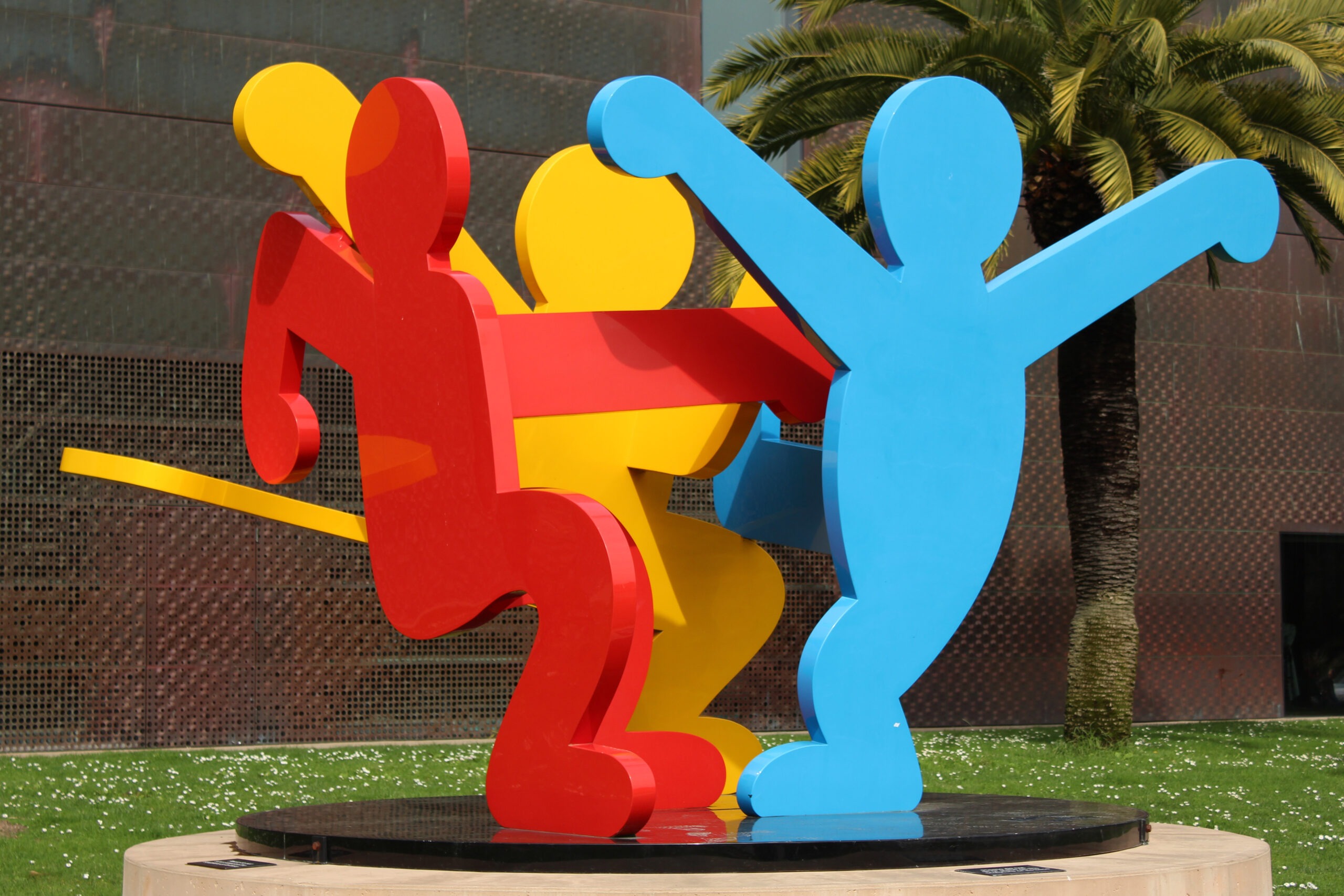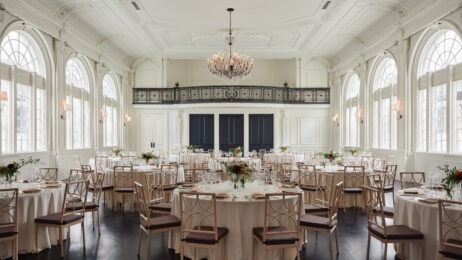How public art makes for the best host cities
Public art does more than sit pretty on the side of a building or light up the inside of a parking garage. Public art unifies the vast diversity of people in a metropolis as they share the same visual experience in their everyday lives. It connects a visitor, previously a stranger to their host city, to the culture, history and personality of their newly discovered destination. It is a representation of the city’s culture and their dedication to improving their communities. Public art creates desirable destinations for meetings for its contribution to cultural representation, urban functionality and beautifying a visitor’s overall experience.
The term “public art” is a term that can refer to many different visual experiences in a city. Whether it is a government-funded installation, a private business owner who hired a local kid to paint a mural, or a graffiti artist establishing their presence in their own city when they feel invisible, public art has a much deeper meaning than many understand. It is the manifestation of the identity and culture of a city—you walk by the same pieces of art as everybody else and everyone learns more about that city and humanity every day. If nothing else connects you to a city, visual representations of people’s life experiences and creativity will.
Honolulu, Hawaii
Hawaii was the first state to implement a percent-for-art law with the Art in State Buildings Law enacted in 1967. This law mandated that 1% of the budget dedicated to the construction of new buildings be allocated to public art, whether those works were commissioned by the Art in Public Places Program (APP) or purchased privately. This legislation was expanded on in 1989 with the Works of Art Special Fund to have public art in all state public places. Without these acts, long-term commissioning, planning and installation of public art would not be possible in Hawaii and the mainland followed the state’s lead shortly after.
Makua and Kila
Inspired by a children’s book named “Makua Lives on the Beach” by Fred Van Dyke, this bronze sculpture by Holly Young is a highly celebrated public art statue in Waikiki. Depicting a young boy befriending a seal while on his surfboard, many consider it to be a representation of the Hawaiian culture of love, respect for nature and, of course, surfing. Both locals and visitors alike routinely adorn the seal and boy with leis and it has become almost an altar for public art and the spirit of the island.
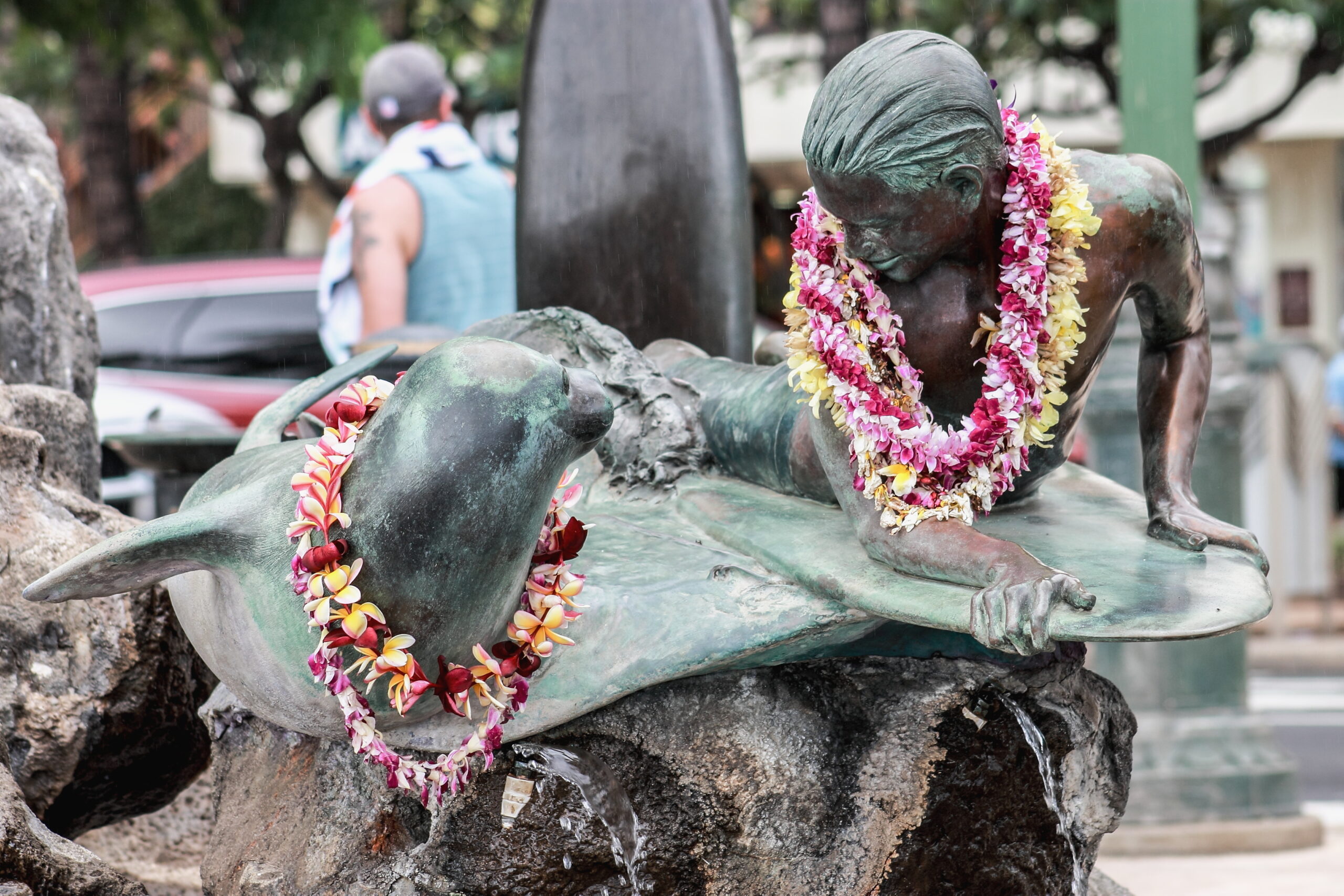
Miami
Known for its vibrant colors and diverse culture, public art is everywhere in Miami but nowhere more so than Miami’s Wynwood neighborhood. Branded as “one giant art installation” by Greater Miami Convention & Visitors Bureau, the Wynwood neighborhood has transformed their streets and architecture to create its own public art museum with rotating murals by some of the most well-known street and graffiti artists in the world. Only minutes from downtown Miami, artists saw buildings in the Wynwood neighborhood as blank canvases and brought Miami’s colorful culture to the urban public.
Wynwood Walls
The Wynwood Walls began as a strategy to revitalize the previously downtrodden neighborhood with large scale murals spanning across six buildings by talented artists. These large-scale works sparked a movement in Wynwood, and public art began to become a part of the neighborhood’s identity. While the Wynwood Walls are preserved, other public artworks are rotated to create a new experience for Wynwood’s monthly art walk. Guided tours are also available for groups to explore the many shops and restaurants in Wynwood—all while being in an outdoor public art museum.
Mana Wynwood Convention Center
The multi-use campus offers a variety of facilities in the heart of Wynwood and has been host to a variety of events. Food festivals, music concerts, conferences and private events have all utilized the convention center for its flexibility and its surrounding hotels, restaurants and nightlife. The White Room Event Hall is the larger indoor facility with 50,000 sq. ft. while the slightly smaller Black Room Sound Stadium is impressive with 45,000 sq. ft. The third facility couldn’t be more Wynwood. A repurposed RC Cola factory is now RC Coola Plant, the convention center’s outdoor event space. The industrial area is now covered with local art and authentic graffiti, making it ideal for large outdoor events that represent Miami culture. The open lot and the covered roof area together give meeting professionals 137,977 sq. ft. of art for their outdoor event.

Durham, North Carolina
As one of North Carolina’s eight SmART Communities, Durham has implemented the SmART Vision Plan to not only beautify the downtown streets with public art but use art to represent the city’s personality with projects that not engage pedestrians but guide visitors through the meetings venues and hotels of the walkable downtown streets.
SmART crosswalks
The downtown district is more pedestrian friendly due to both vibrant and functional public artwork which functions as the neighborhood’s crosswalks. Connecting meeting and tourism venues such as the American Tobacco Campus at Blackwell/Vivian St. Durham Armory to Marriott Durham City Center and Durham Central Park at the Farmers’ Market. Artist Mary Carter Taub names the pedestrian crosswalk installations Snapping!, Crackling!, and Popping! This reference to the Rice Krispies cereal cartoon characters reflects both the geometric Art Deco era popular in the time of their creation in the 1930s as well as the artist’s memories of eating the cereal in the neon vibrance that was the 1980s. The bright geometrical sidewalks guide groups easily and joyously through the major downtown meeting venues and tourist attractions.
Durham Convention Center
A collaboration between City of Durham’s Cultural and Public Art Program and the North Carolina Museum of Art (NCMA) resulted into the previously basic garage doors of the Durham Convention Center (DCC) becoming vibrant cultural murals celebrating the city of Durham’s Hispanic community. Initially installed to promote the NCMA exhibit featuring Frida Kahlo, Diego Rivera and other artists in 2019, the artwork has remained on the convention center and continues to bring color, culture and beauty to the city of Durham.
“Public art helps people who are coming to experience the space, understand the history of the space and also the future of what the community is looking for.”
– Rebecca Brown, cultural and public art manager, City of Durham
“These convention center bay doors were just boring and gray,” says Rebecca Brown, Cultural & Public Art Manager, City of Durham. “Now they’re beautiful and vibrant. One of the murals has an AR interaction. The butterflies will come out of the mural, which is really fun.”
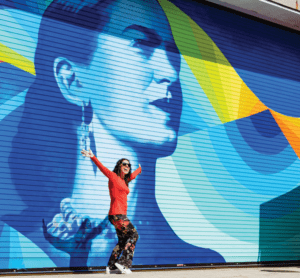
San Francisco, California
Even as a major metropolitan city, San Francisco has previously struggled with being as easily navigable on public transportation as cities like New York or London. That is all changing and art is incorporated into every facet of the expanding public transportation network. From the airport to the shuttle systems transporting travelers to hotels to the city’s trains and buses, public art brings the culture and beauty of San Francisco into a resident’s everyday life and a visitor’s experience.
Art and public transportation
Visitors experience San Francisco’s elite public art program before even leaving the airport. The Arts Commission and its 2%-for-art fund working to ensure anyone landing in San Francisco International Airport (SFO) is greeted by pieces from one of the nation’s largest public art collections.
And it doesn’t end in the airport! The AirTrain station connecting the airport terminals to Grand Hyatt Hotel is beautified by stained glass art from commissioned artist Sarah Cain. And the art in public transportation continues. With the expansion of the Central Subway connecting Chinatown to Union Square came the Central Subway Public Art Master Plan. Site-specific works of art along the trajectory of the train.
Even the bus stops in San Francisco are public works of art. Renowned artist Jorge Pardo was commissioned to design installations of tall luminated structures at the rapid transit bus stations down Van Ness, one of San Francisco’s busiest streets. Colorful, functional and modern, the light installations create a whimsical, industrial and illuminating forest of color to turn public transportation stops into public art galleries.
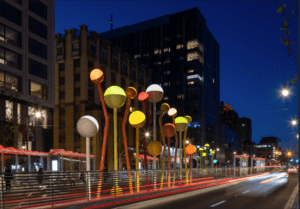
Moscone Convention Center
The largest convention center in San Francisco is the Moscone Center and is surrounded by public art and incorporates art into its interior design. The expansion of the center completed in 2003 added 600,000 sq. ft. of exhibition space for a total of 502,440 sq. ft. of contiguous space. With the addition of Moscone West, there is another 195,848 sq. ft. of flexible exhibit space. But the real reason to plan an event at the Moscone Center is the incorporation of art.
One of the most iconic and internationally recognized pieces is the sculpture outside of the Moscone Center. An untitled installation created by Keith Haring commonly referred to as “Three Dancing Men” stands proudly outside of the center’s doors on Howard and 3rd street. With vibrant primary colors as the choice for the large-scale faceless sculptures, the message is diversity as a strength and the joy of collaboration. As one of the most famous artists contributing to San Francisco’s public art scene, Haring also contributed to the city’s social activism. He was an honoree in the inaugural Rainbow Honor Walk of San Francisco. His sculpture for the Moscone Center demonstrates his activism and gives people a sense of the spirit of San Francisco.
Santa Ana, California
This Southern California town has transformed its municipal structures into public art representing the culture of the region. From celebrating established artists to showcasing up and comers on the most unlikely public platforms, Santa Ana has seamlessly blended art into their city.
Unexpected beautification
Who would think public bathrooms could be beautiful? The City of Santa Ana did and made it a reality. Eight panels of artwork were installed in the downtown area of the city and are displayed on the exterior walls of public restrooms on East 3rd and North Bush. Select artists were chosen after the Santa Ana Arts & Culture Commission reviewed their proposals. Their works were then transformed into vinyl and metal panels and illuminated with lighting fixtures. Not only do the works beautify public restrooms, the colors and light create a safer environment for visitors unfamiliar with the city.
An even more obscure canvas for artwork – the city’s utility boxes. The Utility Box Art Program was created to beautify the otherwise dull and industrial yet necessary fixtures into a public art feature for up-and-coming artists in the area. Chosen by the City Staff, the City Commissioners and local community representatives, artists proved that any surface provides an opportunity to create something beautiful.
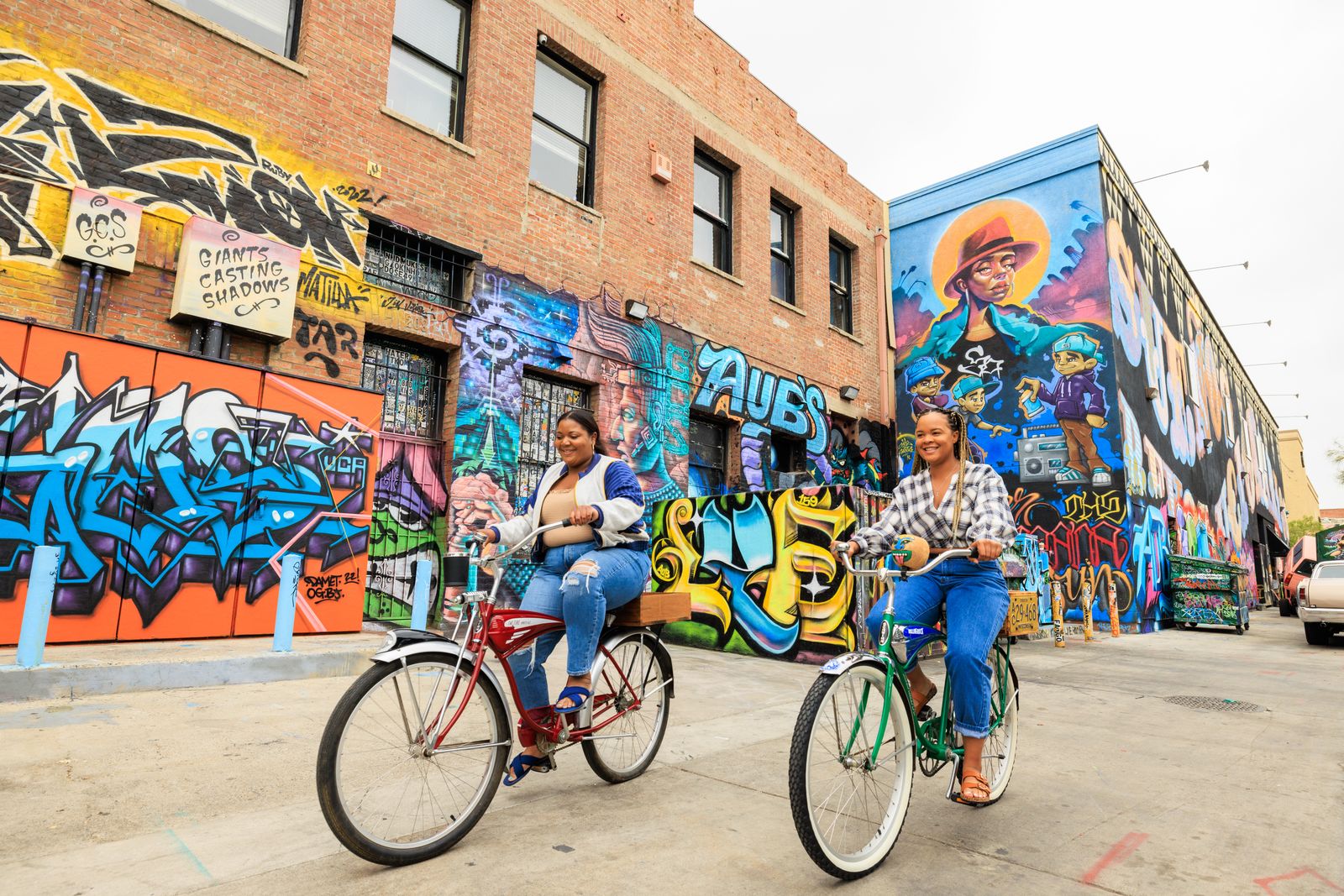
Austin, Texas
The Economic Development Department’s Art in Public Places (AIPP) program in Austin Texas is commissioning public artworks on all media platforms to reflect the culture and community of the city’s diverse neighborhoods. Just like San Francisco, Austin is dedicating 2% of eligible city budgets to public artwork and purchasing artwork to install in city-owned establishments.
Art in Parks
Austin’s rich culture and warm weather make public parks a perfect place for resident families and visitors exploring the city to absorb its personality through its art installations. For no cost at all, visitors can walk through Austin’s parks for team bonding experiences as they learn about the city through it’s public art.
Artist Gigi Miller created a large mosaic sculpture named “Corazon de Oro” to stand tall and colorful in Ricky Guerrero Pocket Park. The son of Raul Guerrero, the superintendent of recreation for the City of Austin, Ricky Guerrero passed away tragically after a football injury in 1970. The tall mosaic multi-animal structure represents Ricky, the Mexican culture prevalent in Austin and humanity uniting to honor the family of a civil servant through public art.
In honor of Austin’s diversity, artist Brian Joseph installed a series of four artworks in Springwoods Park on the sides of recreational buildings depicting people of different backgrounds and ages enjoying different park activities together. It is a true testament to how public art can represent not only the current culture of a city but inform visitors about the sense of community and celebration of diversity Austin has now and will continue to work towards in the future.
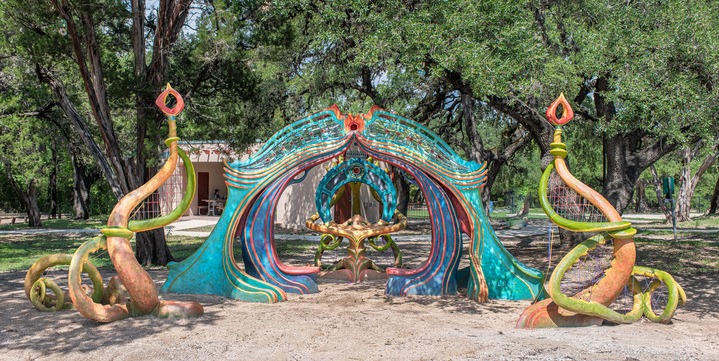
Boise, Idaho
As an up-and-coming destination in the Rocky Mountains, Idaho has significantly increased its budget for public art. Without competing with the stunning and picturesque Rocky Mountains that provide the backdrop of the big city with a small town charm, public art downtown has become a focus.
Freak Alley
In the heart of Downtown Boise is the largest public multi-artist mural gallery in the city and has been nicknamed Freak Alley. The graffiti inspired artwork has become a local and tourist attraction to the restaurants, bars and art galleries in Downtown Boise.

